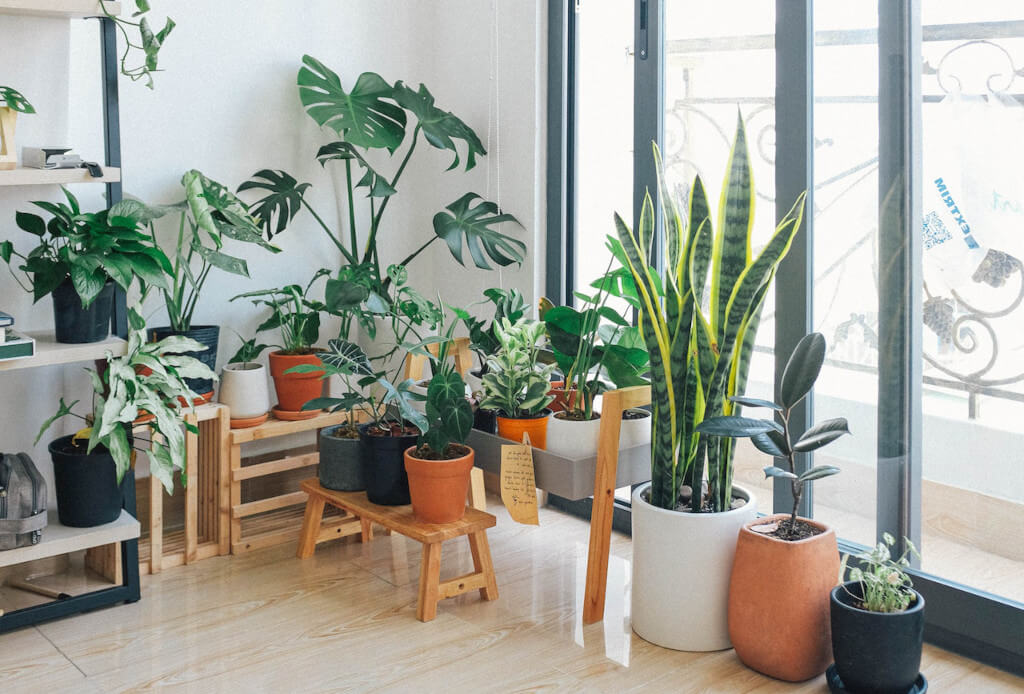Even though a fresh coat of paint, some new artwork on the walls, and updated light fixtures can do wonders for the appearance of a rental house, some leases do not permit tenants to make even the most fundamental modifications. You shouldn’t let this prevent you from making your house into a stylish and lovely place to live. Adding some greenery inside your home is one of the simplest and fastest ways to improve the space without violating the terms of your lease.
Your apartment can be instantly transformed into a verdant oasis by adding indoor plants, which are often visual, decorative, sculptural, and colorful. Not only is caring for one’s plants a satisfying activity but having indoor plants also helps create a healthier environment by enhancing air quality. Therefore, decorating with foliage is not only good for the environment, but it is also good for one’s mental health.
If you take the time to find plants that complement both your aesthetic and the dimensions of your home, you will have a living decoration that brings you joy for the rest of your life.
Peace Lily (Spathiphyllum)
Peace lilies are regarded as one of the most effective houseplants for enhancing the quality of the air inside a building. They prefer rooms that are relatively humid and have strong light, but not direct sunlight. They are able to survive in dim light, but their flowers may not develop properly. Caution! It is important to keep this plant out of the reach of young children and animals, as they may try to eat it. After handling, make sure to thoroughly wash your hands.
Begonia
This plant thrives in moist surroundings; it should be placed in an area with bright, filtered light, and the soil should be kept moist.
Umbrella Tree (Schefflera arboricola)
This tough plant can withstand periods of drought as long as it receives indirect but bright sunlight.
Tickey Creeper (Ficus pumila)
This is a resilient plant that develops easily and quickly, but it does require pruning in order to keep it at a size that is appropriate for indoors. It does well in a bright room, but not one that is exposed to direct sunlight. It can survive in low-light environments, but its growth rate will be affected as a result.
On display
It is up to you how many plants you bring into your space; however, keep in mind that the wider the room, the more plants you will need to fill the space, and the larger they will need to be. To achieve the desired effect on your display, careful planning is required. Experiment with intriguing greenery and different textures, and play around with plants and pots of varying sizes to depth and dimension in height.
The plants’ natural beauty will be emphasized even further by the presence of attractive planters. When arranged in a basket, large plants that make a statement like an umbrella tree (Schefflera arboricola) are a great way to add interest and work well as classic pieces. To produce a one-of-a-kind atmosphere, decorate the table with textured pottery or glass pots, or even leather potholders.
Innovative thoughts
To make the care and maintenance of your plants simpler, group together those that need the same amount of light and attention. Terrariums and even dish gardens are excellent environments for the growth of tropical plants and many succulents, cacti, and mosses. Because of the unique shapes they have, they are great for use in confined spaces, and they are an excellent option for individuals who do not have a green thumb.
Stand up
Displaying your greenery originally and functionally can be accomplished with the help of decorative plant stands. Select plant stands made of metal, plastic, or wood that complement the design of your space, and then cluster them together in a variety of heights to give the impression of depth. The placement of shorter plants in the foreground should be contrasted with taller plants in the background.
Flowering plants are a great way to inject jolts of color into your space; just be sure to keep in mind the colors of the flowers and leaves and ensure that they go well with the remainder of your design scheme. Anthurium andreanum, which contributes a dash of red, and Aechmea fasciata, a bromeliad, which contributes a splash of hot pink, combine to form a noticeable focus point. This modern dining room benefits from the addition of warmth and vitality provided by the yellow pot.
A few helpful hints
- Houseplants will look more attractive when placed against a plain background.
- When choosing plants, prioritize those that have a high chance of thriving in the lighting and temperature conditions that are present in the particular location you have in mind.
- It is important not to place plants too close to heating systems or fireplaces because the hot, dry air will cause the plant’s leaves to lose their moisture content and eventually die.
No-fuss Plants
Air plants do not require a great deal of care; to keep them hydrated, simply submerging them in water for 15–20 minutes once a week should be sufficient. Put them in an elegant basket for a straightforward display.
Bromeliad (Aechmea fasciata)
Although it is technically considered an air plant, this stunning specimen relies on its roots for support and can thrive in either shade or indirect sunlight.
Anthurium Andreanum
In order for them to flourish, they require a healthy dose of light and a moderate amount of humidity; however, they must be kept out of direct sunlight or their leaves will turn brown.
Areca Palm (Chrysalidocarpus lutescens)
This striking palm is simple to care for, yet it is both bold and attractive. It will do wonders for brightening up a drab corner. It works well in bright areas that do not receive direct sunlight but requires a fairly humid environment.
Both the form and the function
Put your plants on display in a variety of terracotta pots; this will allow the plants to be the focal point of attention because the pots will all be the same size and shape. Make use of floating shelves to display your natural décor, and group together plants that have a complementary aesthetic, so that the overall effect is more striking.
When choosing houseplants to adorn a kitchen, it is important to consider the level of humidity present and to pick varieties that can survive in a warm setting.
Orchids, ferns, snake plants, and Monstera deliciosa are some examples of plants that thrive in environments with high levels of humidity and can be used in your bathroom to create a relaxing atmosphere reminiscent of a day spa. Place your potted plants in a prominent location on a countertop; if you are short on space, show off your favorites on a windowsill; alternatively, install brackets and hang them from the ceiling.

